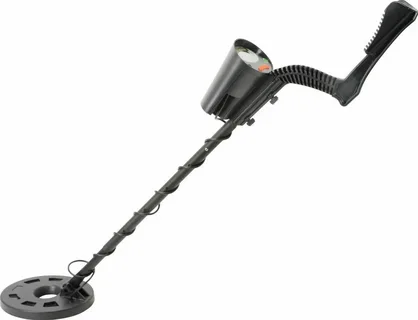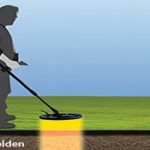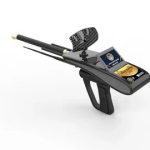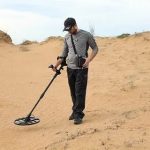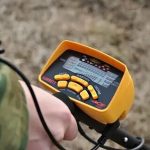Detector metal detectors have long been used by treasure hunters and archaeologists to uncover hidden treasures and artifacts buried beneath the earth’s surface. Whether it’s searching for long-lost relics, treasure troves, or even lost jewelry, a metal detector can be an invaluable tool for uncovering valuable items that have been hidden for centuries. In this article, we will explore the fascinating world of uncovering hidden treasure with a metal detector, and the exciting discoveries that await those who are passionate about this hobby.
Uncovering Hidden Treasure with a Metal Detector is an exciting hobby that has the potential to unearth valuable artifacts, coins, and other buried items. Metal detecting enthusiasts often explore beaches, parks, and old battlefields in search of hidden treasure. The use of modern metal detectors has made it easier to locate buried metal objects, leading many hobbyists to discover fascinating historical finds. Whether for recreation or potential profit, the thrill of uncovering hidden treasure with a metal detector continues to captivate people around the world.
10 Best Metal Detectors for Treasure Hunting in 2021
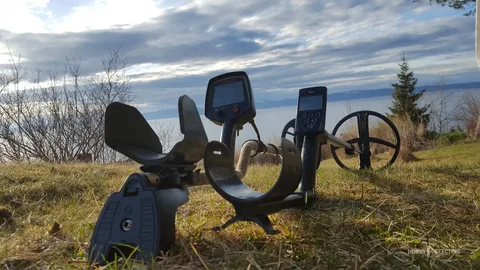
1. Minelab Equinox 800: An advanced multi-frequency metal detector with customizable settings and excellent performance in various terrains.
2. Garrett AT Pro: This all-terrain metal detector features a waterproof design, target identification, and high sensitivity to small objects.
3. XP Deus: Known for its lightweight and wireless design, the XP Deus offers customizable programs and high sensitivity to small targets.
4. Fisher F75: Recognized for its fast target separation and ability to discriminate between different types of metals, making it suitable for coin and relic hunting.
5. Nokta Makro Simplex+: An affordable yet powerful metal detector with waterproof construction, built-in wireless audio, and 4 search modes.
6. Minelab CTX 3030: Offering advanced target discrimination, GPS mapping, and wireless audio, this detector is popular among serious treasure hunters.
7. Garrett ACE 400: A user-friendly metal detector with digital target ID, adjustable frequency, and excellent depth and sensitivity.
8. Whites Spectra V3i: Equipped with multiple frequency options, customizable settings, and advanced target discrimination, making it suitable for experienced users.
9. Teknetics T2: Known for its exceptional depth and target separation, the Teknetics T2 is a high-performance metal detector for serious treasure hunters.
10. Bounty Hunter TK4 Tracker IV: An affordable and easy-to-use metal detector with a waterproof coil and 3 different search modes, making it ideal for beginners and casual hobbyists.
The Science Behind How Metal Detectors Work
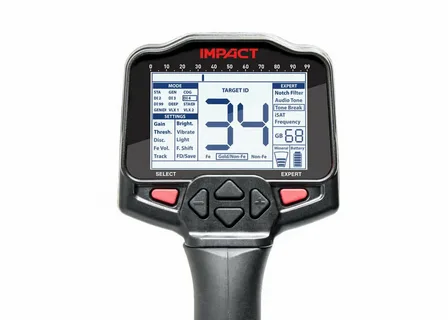
Metal detectors work based on the principles of electromagnetism. When a metal object comes into the vicinity of the metal detector, it disrupts the magnetic field being emitted by the detector. This disruption causes the detector to emit an audible signal or visual indication, alerting the user to the presence of metal.
Most metal detectors consist of a coil of wire through which an electric current is passed, creating a magnetic field. When this magnetic field encounters a metal object, it induces an electric current in the metal, which in turn creates its own magnetic field. This disturbance in the detector’s magnetic field is what triggers the alert.
The level of sensitivity and the ability to discriminate between different types of metals depends on the design and technology of the metal detector. Some detectors are able to distinguish between ferrous and non-ferrous metals, while others can even identify specific types of metal.
Overall, the functioning of metal detectors is based on the fundamental principles of electromagnetism and the interactions between magnetic fields and metallic objects.
Tips for Using Your Metal Detector Like a Pro
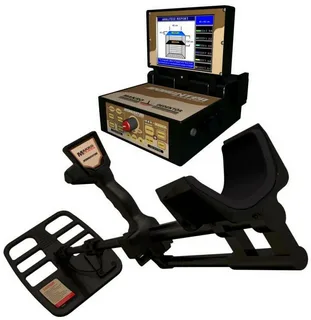
Here are some tips for using your metal detector like a pro:
1. Research your location: Before heading out to detect, research the history of the area you plan to search. Look for information about past settlements, events, and activity that could indicate the presence of valuable items.
2. Practice with different settings: Familiarize yourself with the settings and functions of your metal detector. Practice using different sensitivity levels, discrimination settings, and ground balance to optimize your chances of finding valuable items.
3. Keep your coil close to the ground: For best results, keep the search coil of your metal detector close to the ground. This allows for improved detection of buried items and helps to cover a larger surface area.
4. Swing the coil in a consistent pattern: When sweeping the coil over the ground, use a consistent and overlapping pattern to ensure thorough coverage of the area. This will help to prevent missing any potential targets.
5. Be patient and thorough: Metal detecting requires patience and thoroughness. Take your time and thoroughly search an area before moving on to the next. Valuable items may be buried deep or hidden among other objects, so a diligent approach is essential.
6. Use a pinpointer: A pinpointer is a handheld metal detecting device that can help you locate targets more accurately once they’ve been detected by your metal detector. This can save time and effort when digging for buried items.
By following these tips and staying persistent, you can improve your metal detecting skills and increase your chances of finding valuable items.
The History of Metal Detectors: From War to Hobby
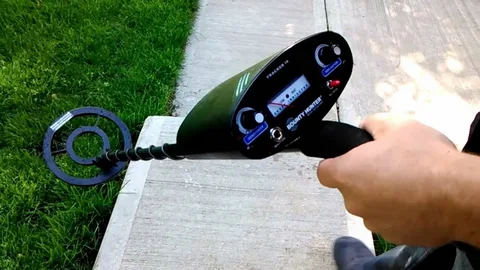
The history of metal detectors dates back to the early 20th century, when they were primarily used for military and security purposes. The first practical metal detector was invented by Alexander Graham Bell in 1881 in an attempt to locate a bullet lodged in U.S. President James Garfield’s chest. However, it wasn’t until the 1930s that the technology began to be used for military and security purposes.
During World War II, metal detectors became an essential tool for locating landmines and unexploded ordnance. After the war, the technology was adapted for use in the civilian sector, particularly in the mining industry.
In the 1960s, the first consumer metal detectors were introduced, primarily for treasure hunting and hobbyist use. This led to a surge in interest in metal detecting as a recreational activity.
Since then, metal detectors have continued to evolve, with advancements in technology leading to improved accuracy and sensitivity. Today, metal detectors are used in a variety of applications, from security screenings to archaeological surveys and hobbyist treasure hunting. The history of metal detectors is a testament to their versatility and enduring appeal.
Top 5 Metal Detector Accessories You Need to Have
1. Coil Covers: Coil covers help protect the coil of your metal detector from scratches, dings, and wear and tear, extending its lifespan.
2. Headphones: Quality headphones are essential for clearly hearing signals and tones emitted by your metal detector, especially in noisy or windy environments.
3. Digging Tools: A durable, compact shovel and/or hand trowel are crucial for efficiently and cleanly digging up targets without causing damage to the surrounding area.
4. Pinpointer: A pinpointer probe helps you precisely locate the exact spot of a target, making it easier and faster to recover items without excessive digging.
5. Pouch or Bag: A pouch or bag to carry your accessories such as finds, tools, and personal items is a handy accessory for metal detecting trips, keeping you organized and enabling easy access to your gear.
How to Choose the Right Metal Detector for You
See also: prospecting tools gold
When choosing the right metal detector for you, consider factors such as the type of detecting you will be doing, the size and weight of the detector, the available features and settings, the level of user experience, and the budget. For different types of detecting, such as gold prospecting or relic hunting, specific features and settings may be more important. The size and weight of the detector will also be essential, especially if you plan on using it for extended periods. Additionally, consider the available features and settings, such as ground balance, discrimination, and sensitivity controls, and how they will suit your detecting needs. Your level of experience with metal detecting will also influence the type of detector you should choose, as more advanced detectors may be overwhelming for beginners. Finally, consider your budget and look for a metal detector that offers good value for the price. Research and compare different models to find the right metal detector that meets your specific needs.
Metal Detecting Etiquette: Do’s and Don’ts for Hobbyists
Do’s:
– Always obtain permission before metal detecting on private property.
– Fill in any holes you dig, leaving the area in the same or better condition than you found it.
– Respect the environment and wildlife while metal detecting.
– Report any valuable or historically significant finds to the relevant authorities.
Don’ts:
– Metal detect on protected or culturally sensitive sites without permission.
– Leave behind any trash or debris while metal detecting.
– Ignore local regulations and laws regarding metal detecting.
– Use your metal detector in a way that could damage property or the environment.
The Most Valuable Finds Ever Discovered by Metal Detectors
Some of the most valuable finds ever discovered by metal detectors include the Hoxne Hoard in England, which consisted of over 14,000 Roman gold, silver, and bronze coins and other precious objects, estimated to be worth over £12 million. Another notable find is the Staffordshire Hoard, a collection of over 3,500 Anglo-Saxon artifacts including gold and silver war gear, discovered in England and valued at over £3.2 million. Additionally, the Crosby Garrett Helmet, a Roman cavalry helmet found in England, was valued at over £2 million. These discoveries demonstrate the incredible potential of metal detectors to uncover significant historical and monetary treasures.
Metal Detecting Laws: What You Need to Know Before You Dig
Metal detecting laws vary by location and it’s important to be aware of the regulations before you start digging. In many areas, metal detecting is allowed in public parks and beaches, but it’s important to obtain permission from the local authorities. Some areas may have restrictions on digging or require a permit for metal detecting. Additionally, it’s important to respect private property and obtain permission from the landowner before detecting on their land. It’s also important to be mindful of cultural and historical sites, as disturbing these areas is often illegal. Always research and understand the metal detecting laws in your area before you start digging.
From Beaches to Battlefields: The Best Places to Use Your Metal Detector
From Beaches to Battlefields: The Best Places to Use Your Metal Detector is a comprehensive guide that showcases the top locations for metal detecting enthusiasts. It covers a range of sites, including beaches, parks, old homesteads, and historical battlefields. The book provides tips on how to find the best targets and offers useful advice on obtaining permission to detect on private property. Whether you are a beginner or an experienced detectorist, this book is a valuable resource for finding the most rewarding locations for metal detecting.

